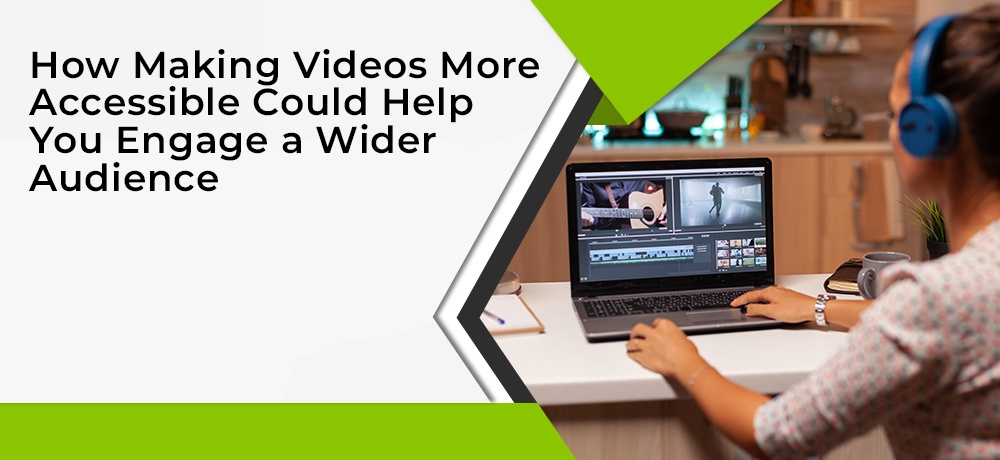How Making Videos More Accessible Could Help You Engage a Wider Audience

Government agencies, educational institutions, filmmakers and niche businesses are often required to provide materials with captions or in different languages. This can be incredibly helpful to members of the general public seeking information or looking to engage with content.
By providing videos with wide accessibility, organizations of all kinds can better engage their audiences and reflect the diversity of their communities.
Benefits of Making Accessible Videos:
- Deaf and hard-of-hearing folks can enjoy your content with captions. You can also create an American Sign Language (ASL) version to further engage this audience.
- Captioned videos can catch the attention of people scrolling through their social media feeds who have their audio switched off.
- If your audience includes non-English speakers, consider providing translated versions of your video. There are many ways to do this, from simply captioning the video in another language to translating all text on screen and using voiceover and on-screen talent that speaks the language to make an entirely new version of the video.
- Captions in multiple languages have become a common requirement for many streaming platforms, increasing the number of countries in which content can be made available.
Start at “Picture Lock”
When a film or television program is in post-production and no more script or editing changes are needed, it is considered “picture locked.” It is important to reach this stage before captioning or translating your video. If you have finished making changes to your script and the timing of the video before captioning, then you won’t need to worry about adjusting these once you have created captions. Similarly, it is helpful to have the English version at picture lock before making versions in other languages. Otherwise, you risk making changes to the English version that will need to be reflected in each different version.
Captioning Options
You may be familiar with closed captions, which are primarily used on broadcast television. However, when captioning videos for the web, you have more options than ever before, including some that allow you to exert greater control over the look of your captions. Your project may require an “open captioned” or subtitled video version (in which captions will always be visible). A captioning file can also be uploaded with the video in some platforms, allowing users to turn the captions on or off.
Many streaming platforms now require captions in multiple languages. Amazon Prime, for instance, will restrict the countries in which content can be shown based in part on the languages available as captions. English captions are required for all content published in the United States.
The captioning process can increase the number of deliverables to be created (and reviewed) at the end of a project. Keep in mind that the number of deliverables required can grow exponentially if different language versions are needed.
Creating Versions in Other Languages
In order to translate your video to another language and provide a comfortable pace for the viewer, you may need to re-time it. Voiceover in Spanish often runs longer than the same script in English, for example. If you are creating a piece with a fixed time limit (like a 30-second-long spot), you may need to edit the script significantly to make the Spanish narration fit.
If text appears on screen in your video, you might choose to translate that as well. Remember to build time into your schedule to have translations created and to review each new deliverable. If you don’t have a person on staff who can review your work in a given language, you will need to make arrangements with someone who can.
The Henninger team can assist in creating accessible videos by providing the captioning, language translation services, and deliverables you need. We take care of planning, executing, and reviewing all deliverables by having in-depth conversations about accessibility early in the project.
Get In Touch With Us Today!
As a leading video production and post-production company in Arlington, VA, Henninger Media Services will help you deliver your message through an ever-changing world of digital media. We were founded in 1983 by Rob Henninger on five core values: quality, service, innovation, teamwork, and creativity.
Our services include video production, video post-production, edit suite rentals, design and animation, digitization and archiving services, DCP and Blu-ray, captioning, QC, and delivery. We serve clients across the Mid-Atlantic Region, including Washington, D.C., Baltimore, MD, and Arlington, Richmond, and Charlottesville, VA.
To learn more about the other services we have to offer, please click here. If you have any questions about video production, please contact us by calling 1 (888) 243-3444 or email us at info@henninger.com.